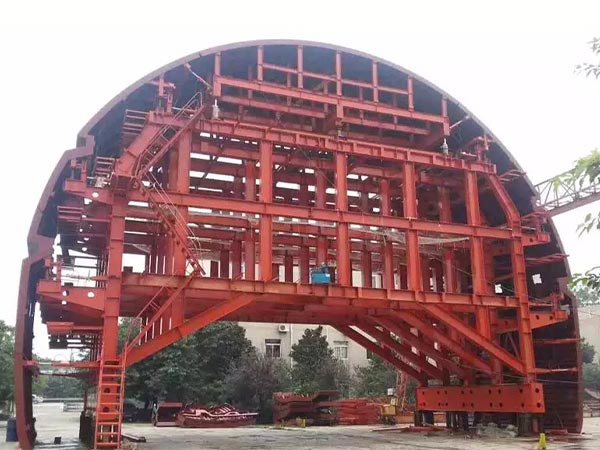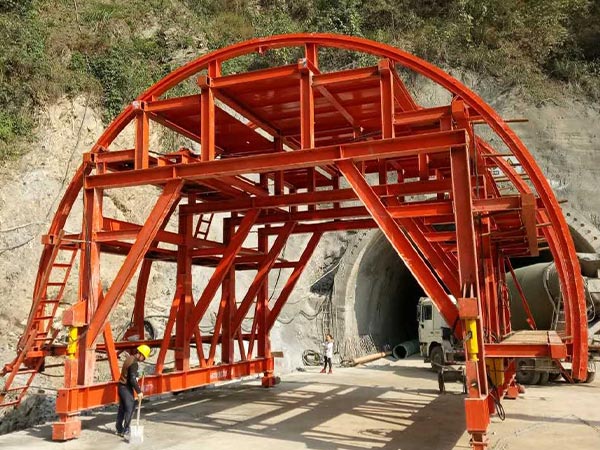Principles of Tunnel Construction Equipment Configuration
The mechanized construction of the tunnel has experienced three stages: small equipment drilling and blasting construction, large trackless transportation equipment drilling and blasting construction, and non-drilling and blasting construction. Part of the mechanized operation is gradually embarked on a process of comprehensive mechanized operation. From manual excavation to the use of TBM (tunnel boring machine), the current comprehensive level of tunnel mechanization construction has made a qualitative leap compared with the last century.
Principles of Tunnel Construction Machinery Configuration
Productivity: refers to the comprehensive performance and production capacity of the production work surface formed by the combination of single machines. The selection and configuration of tunnel construction machinery should start with the overall capacity after the configuration of the machinery, so that the mechanical performance of each single machine can be matched with the overall production capacity to achieve the best combination that is both economical and reasonable.
Reliability: refers to the requirement that each single machine can maintain its good technical performance stably during operation, and reliably complete the rated power required for the construction period under the specified time and construction conditions.
Safety: One refers to the safe operation function of the machine itself; the other refers to the safety guarantee for equipment operators and surrounding construction personnel when the machine is running, and the machine should be equipped with corresponding safety protection devices.
Durability: It means that each single unit in the configuration unit should be durable and match the technical life.
Maintainability: Refers to the configuration of the equipment is easy to check, repair and maintain, which is conducive to the purchase and storage of equipment spare parts.
Economical: It means that economical and reasonable energy-saving equipment should be considered first when configuring mechanical equipment, and it should be based on national conditions and try to face the domestic market. The equipment configured should be adapted to the status and investment capacity of the tunnel itself.
Adaptability: It means that the equipment can adapt to different construction schemes under various geological conditions and can meet the construction needs of auxiliary construction methods.

Several key issues that must be solved when configuring equipment
The construction progress depends not only on the level of mechanization and the production capacity of the configuration equipment, but also on the management and scheduling of the mechanical equipment on site, so that different equipment can be used reasonably. Maximize equipment operators. The comprehensive quality of equipment maintenance personnel and equipment management personnel can effectively reduce the failure rate and shutdown rate of equipment to the lowest point and ensure the smooth progress of construction and production.
To solve the problem of matching the parts and the life of the whole machine, it is necessary to have a certain degree of foresight and sufficient spare parts reserves. Solve the configuration and connection of construction machinery and civil technology. For large-scale machinery and equipment to be transported in the tunnel, the corresponding transportation track must be laid. The shunting track in the tunnel is reasonably arranged, which is conducive to avoiding vehicles and saves shunting. time.
The ventilation and dust removal equipment and the water-proof and drainage equipment in the tunnel should be included in the equipment configuration. The main sources of dust and harmful gases in the tunnel are harmful gases generated during construction blasting and dust generated by sprayed concrete operations. Face construction excavation, supporting sprayed concrete, secondary lining protection working face and parallel operation of inverted arch bottom inspection. According to the specific construction situation and project construction needs, accurately adjust the three operation line procedures and reasonable spacing to minimize the mutual interference of various construction links.

Principles of mechanical equipment configuration
The configuration of tunnel construction equipment must first meet the construction period, quality, safety, environmental protection, etc. required by the construction contract, as well as technical and economic conditions. Technical conditions include workload, work efficiency, various consumption, operability, versatility, durability, and ease of maintenance; economic conditions include purchase costs (lease costs), utilization rate, construction period requirements, reasonable construction schedules, etc.
The specific configuration principles are:
It should be matched with the construction plan and compatible with the design requirements of the construction organization. It should have the ability to adapt to different surrounding rock conditions and be compatible with the overall quality and management level of operators, maintenance personnel, and management personnel.
Due to the long construction time of Qiling Tunnel, the remote location, and the difficulty in purchasing equipment accessories, we conduct professional training for equipment operators and maintenance personnel, and we must understand the condition of each equipment clearly to achieve predictability of equipment maintenance , Procurement of spare parts for maintenance in time.
Mechanical equipment commonly used in tunnel construction

TBM (Tunnel Boring Machine)
TBM can be divided into three types according to the tunneling type: open TBM, single-shield TBM, and double-shield TBM.
(1) Open TBM. Typical models include the double-row support shoe structure of German With and the single-row support shoe structure of Robbins of the United States, which are suitable for tunnel construction with relatively stable rock formations. In the construction of relatively broken rock formations, it is necessary to carry out spray-anchor support in time behind the shield, and the final protection method is the secondary lining of reinforced concrete.
(2) Single shield TBM. Unlike the open TBM, the single-shield TBM is equipped with a complete circular shield. The propulsion depends on the propulsion cylinder to support the installed tube or the overall lining to obtain a reaction force. The single-shield TBM cannot be carried out at the same time as the tunneling and installation of the segments, and the progress is slow, so the application is relatively small.
(3) Double shield type TBM. The propulsion principle is the same as the single-shield TBM, but it is equipped with front and rear shields, with a telescopic shield between the front and rear shields, and a set of support boots on the rear shield. When the geological conditions are good, the double-shield TBM and segment installation can be carried out at the same time, and the tunneling speed is faster; when the geological conditions are poor, the double-shield TBM adopts the single-shield TBM mode.
Excavation equipment
Hydraulic rock drilling rig. According to the structure, it can be divided into gantry type and solid web type. According to the walking mode, it can be divided into tire type, track type and crawler type. The abdomen of the gantry-type rock drilling rig can pass slag transportation vehicles, which effectively utilizes the limited cross-sectional space in the tunnel, so that the construction equipment on each work surface does not interfere with each other, and effectively improves the efficiency of the equipment. It is often used in single-track railway tunnels. construction. The hydraulic rock drilling rig has high efficiency in excavation and drilling operations, low labor intensity, and good working environment conditions, but the one-time investment is relatively large.
Multifunctional excavation trolley. In order to reduce investment, in the early 1990s, domestic tunnel construction units developed a pneumatic drill multi-function rig supporting method. Its advantages are: easy production, low cost, easy promotion; strong flexibility and wide application; it is conducive to full-face blasting technology The implementation of the blasting effect is good, and the advancement speed is relatively fast, which is suitable for the basic national conditions of sufficient and cheap domestic labor. This kind of excavation method is generally accepted for a certain period of time due to various advantages, but there are also serious shortcomings, that is, low technology content, high labor intensity of workers, poor working environment conditions, and cannot meet the needs of the development of the situation.
Transportation Equipment
There are three main methods of tunnel waste slag transportation: trackless transportation, track transportation and belt transportation. The first two transportation methods are commonly used. Belt transportation is only used in a small number of tunnel constructions.
Trackless transportation uses dump trucks as a means of transportation and is mostly used in the construction of large-section tunnels and short-distance tunnels. The advantage is that it is mobile and flexible, and the waste slag is not allowed to be transported twice and can be transported directly to the waste slag yard. The disadvantages are serious exhaust gas and noise pollution in the tunnel, serious damage to the invert of the tunnel bottom, high tire consumption, and greater restriction in the construction of small-section tunnels.
Rail transportation Laying tracks in the tunnel, using battery trucks to pull the slag truck and feed truck for transportation. Its advantages are no waste gas and noise pollution, good ventilation effect, and no damage to the invert of the tunnel bottom. The disadvantages are poor maneuverability, large one-time investment, complicated construction management, and long distance from the waste slag field, requiring a secondary waste slag transfer station outside the cave.
Support lining equipment
Initial support equipment. In tunnel construction, the initial support adopts sprayed concrete with anchor rods, hanging nets, and steel arches. Concrete spraying machines are divided into dry spraying and wet spraying, according to the structure can be divided into rotor type and piston type. The rotor type structure is simple and the price is low. The piston type is mainly used as a wet jet, with high jet quality, and can be used for steel fiber jetting, and the price is relatively high.
Secondary lining equipment. In tunnel construction, the mechanical equipment used for concrete injection lining has a variety of configurations according to different construction techniques. The main machinery includes concrete mixing station, concrete transport tanker, concrete delivery pump, lining formwork trolley and other equipment.
Taking into account the construction period and overall economic benefits of the tunnel, a multi-functional excavation trolley is used for operation. The waste slag yard is far away from the entrance of the cave and is restricted by the conditions of the entrance. The dump truck is used to discharge the slag and transported to the waste slag yard at one time. The initial support adopts wet spraying machine for concrete spraying. The secondary lining is supported by a lining template, and the concrete pump is used for construction.
All in all, the configuration of tunnel construction machinery and equipment is not as advanced as possible. It should be considered from the overall rational configuration. In addition to the social environment and safety production needs, the first consideration is technical and economic conditions. When the economic conditions are met, the need for technical conditions must be considered.


